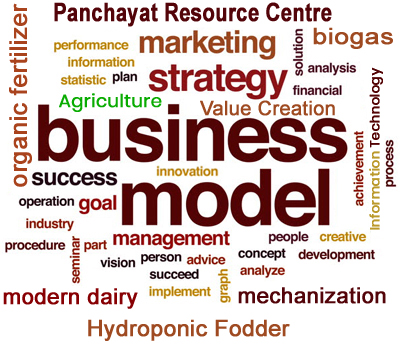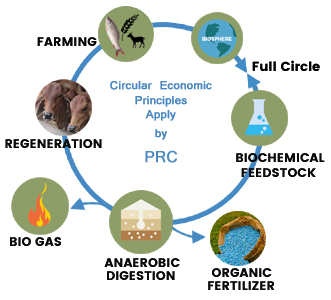Welcome to The Institute of Climate and Agriculture Reorientation (ICARe)
-
-
Mon - Sat 9:30 - 6:30, Sunday - CLOSED
Call Anytime
971 805 3213
Welcome to The Institute of Climate and Agriculture Reorientation (ICARe)
Mon - Sat 9:30 - 6:30, Sunday - CLOSED
Call Anytime
971 805 3213
New approaches to transform farming systems
This is our endeavor to bridge the gap between latest Agri-technologies & current farming practices with a smarter program under “Mission Agri-Mechanization & Agro-waste” (M.A.M.A), a circular economy business model, after observing socio-economic crisis looming large in the farming community. Taking a resolution to embark on agriculture related new ventures to encourage the farming community’s interests. In meeting this goal, the organization would prove instrumental by optimizing agriculture practices & allied services though mechanization, judicial usages of Agro-waste with protection of natural resources & environment. A focused push to real-time actionable insights enable agriculture technology companies to take planned & responsive business decisions & minimize the business gap with the farming community.

-Transforming Farming approaches-
This is our endeavour to bridge the gap between the latest Agri-technologies and current farming practises with a smarter programme under "Mission Agriculture Mechanisation & Agro-waste management" (M.A.M.A.), a circular economy business model, after observing the socio-economic crisis looming large in the farming community. Taking a resolution to embark on agriculture-related new ventures to encourage the farming community’s interests in meeting this goal, the organisation would prove instrumental by optimising agriculture practises and allied services through mechanisation, judicial usages of Agro-waste, and protection of natural resources and the environment. A focused push towards real-time actionable insights enables agriculture technology companies to make planned and responsive business decisions and minimize the business gap with the farming community.
Panchayat Resource Centre (PRC)
The Panchayat Resource Centre (PRC), a kind of strategic alliance, is a set of agreements between two or more parties to minimize the gap between businesses for great technology utilization and success in increasing production while remaining independent entities.
The operation of modern technology in farming and allied services will shift conventional agriculture into controlled and optimised farming. The PRC is adopting a concept that integrates the various strategies, methods, and technologies that are applied in the farming business to keep the farm productive and profitable. So, new technologies will play a major role in the management of farming. The PRC will work in two modes: (1) Administration and (2) Operation.
The partnership at PRC aims for synergy, where each partner hopes that the benefits from the alliance will be greater than those from individual efforts. The involved stakeholders will try to consolidate their positions in their respective fields, so the number of businesses will increase drastically. The alliance often involves marketing, sales, and services for companies, access to knowledge and expertise, economic specialisation, and shared risk for the farming community. The companies can take advantage of PRC’s platform for genuine services and easier access to their own products.
The partnership can develop outsourcing relationships where the parties desire to achieve long-term win-win benefits and innovation based on mutually desired outcomes. So, strategic alliances occur when two or more organisations join together to pursue mutual benefits.
The ICARe Alliance aimed to build rural economies of scale and scope. So, partners may provide the Panchayat Resource Centres with resources such as agriculture pre- and post-harvesting technology products, warehousing and distribution channels, project funding, capital equipment, knowledge, expertise, or intellectual property for mutual benefits.
As a part of the ecosystem, farming businesses depend on natural resources and climatic conditions. So, we leverage a circular economic approach in everything we do and work to reduce environmental impacts and emissions from society. Our purpose is to empower a progressive, sustainable, and connected farming community. For this, we have been putting smart tools in the hands of farmers in the agricultural sector, creating intelligent technologies that drive positive change. We remain committed to this effort, leaving no one behind.

Farm mechanisation has been well-received throughout rural India as one of the most important elements of modernising agriculture. The level and appropriate selection of agriculture machinery has a direct impact on land and labour productivity, farm output and income, environmental safety, and the quality of life of farmers in India. Agriculture machines also increase work output per unit of time. Suitability for small and medium farms, simple dosing and technology, versatility for use in several farm operations, affordability in terms of cost and profitability, and most importantly, repair and maintenance services are the basic requirements for the expansion of Farm mechanisation.
The automated hydroponic fodder system will provide 365 Days of fodder grass production. The machine has ready-fit plug-and-play units with a capacity of 2500+ KG per day of grass fodder production from 100 KG of fodder grass. Not only are these ready-fit units, but they can do any size of commercial production, irrespective of indoor or outdoor. This is an advanced technology for producing grass fodder with the highest quality yields via all UV Disinfectant systems, Cartridge Filters, Reverse Osmosis Units, Automated Environment Control systems with customized Spectrum Grow lights, etc.
As per MNRE data, the total biogas potential, in terms of electrical Power, is estimated at 1281 MW. The major industries generating biogas are distilleries, Sugar, and Starch. These three, together, account for 3/4th of the total Biogas potential of India. The other major industries are Pulp and paper, Milk processing, slaughterhouses, and Poultry.
Bio-CNG is the purified form of Biogas where all the unwanted gases are removed to produce >95% pure methane gas. Bio-CNG is exactly similar to commercially available natural gas (CV: 52000 KJ/Kg) in its composition and energy potential. As it is generated from biomass, it is considered a renewable source of energy and thus attracts all the commercial benefits applicable to other renewable sources of energy.
Bio-CNG can directly replace every utility of LPG and CNG in India. It has the potential to be the future of renewable fuel because of the abundance of biomass in India. Bio-CNG production will also ease the burden of LNG and LPG imports for India. It is estimated that Bio-CNG can replace 2/3 of India’s CNG imports, which are currently pegged at 429 billion cubic feet.
One tonne of slurry provides 44 kg of nutrients as compared to 19 kg of farmyard manure (Gobar) and 27 kg of compost. Micronutrients such as Zinc, copper, and Manganese present in the original material are also recovered in Bio-CNG slurry and can prove useful for crops when used as organic manure.
The digested slurry can be fed directly to the crop through the irrigation channels, or it can be stored and used later, whenever required.
1) Most important benefits: Reduce crude oil imports, save foreign exchange, create employment opportunities in rural areas, ensure better and timely payment for farmer’s crops, and get good income from crop residue and damaged food grain.
2) The important benefits: The bio-CNG would be continuously available to the Gram Panchayat members as Electricity and Vehicle Fuel to fill in their vehicles instead of using petrol or diesel, which causes air pollution and is the main reason for climate change and human disease.
3) Benefits from discontinuing the burning of cattle dung and forest wood in the kitchen which are currently being used as fuel to run the village kitchen. As a replacement for this, the villagers would get bio-CNG in pipes or cylinders for their homes. This will stop air pollution and promote healthy living.
4) Benefits from the Bio-CNG plant, which would use cow dung from the Panchayat Resource Centre and dung obtained from Gram-Sabha members of a Gram Panchayat; agriculture; green waste of vegetables and sugar cane; Post-harvest agriculture waste; waste obtained from nearby vegetable and fruit markets (Sabzi-mandi); and kitchen waste obtained from the homes of Gram-Sabha members This will help in cleaning the villages and nearby cities from the littered garbage by converting it into clean and green fuels like bio-CNG and manure.
5) Benefits from discontinuing the burning of post-harvest agriculture waste in fields, which is currently the major source of poisonous air pollution. This post-harvest residue would be used as raw material in the bio-CNG plant, and rich Organic fertiliser would be obtained as a by-product of the bio-CNG plant. This bio-fertiliser increases the yield of crops by 28%. The farmer of the concerned Gram Panchayat will get a direct benefit from the consumption of this bio-fertiliser.
6) Other benefits from Panchayat Resource Centres, where good Indian breeds of cattle would be reared in a cooperative manner, will showcase the best and correct rearing methods to the villagers and give them an opportunity to learn the latest techniques to care for the livestock. This way, the villagers would be able to breed the best-quality Indian cattle and fetch good returns from uncontaminated organic milk and milk products. The cow dung obtained from the Swavlamban Centre would be used in the bio-CNG plant.
7) ) Use of hydroponic Green fodder: It has a much higher protein content, energy value, and vitamin and mineral content than conventionally cultivated green feed crops. Hydroponics green feed increases milk production by 22% in cattle, increases body weight by 20%, increases dry matter intake, increases reproductive efficiency by 55%, and reduces the cost of feeding per kg of weight by 18%.